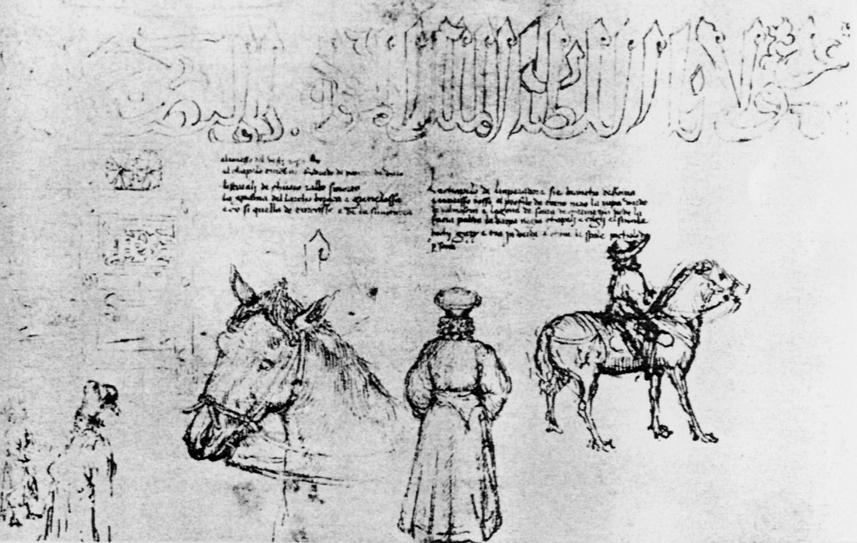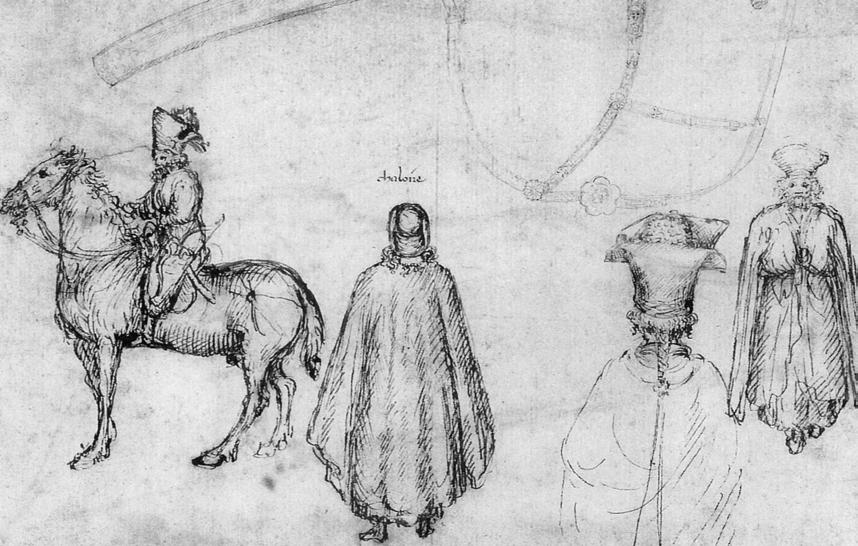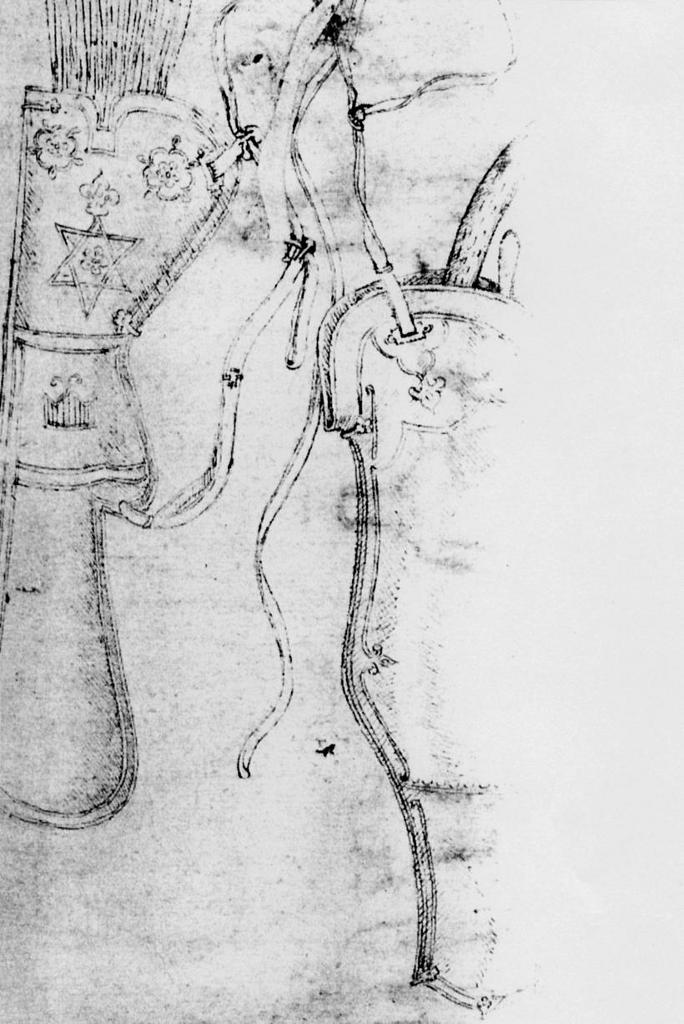Shop Amazon - Create an Amazon Baby Registry

Join Amazon Prime - Watch Thousands of Movies & TV Shows Anytime - Start Free Trial Now
The Robe, Boots and Bow of John VIII Palaeologus, by Antonio Pisanello, Italy, 1438
Byzantine Emperor John VIII Palaeologus came to a council at Florence (1439) to discuss the possible reunification of the Eastern and Western Catholic churches.



An extract from p146 "The Costume And Weapons Depicted In Pisanello's Medal For John VII Palaeologus" – David Alexander in Gladius XXIV, 2004
The Robe, Boots and Bow
Pisanello seems to have precisely copied the inscription on the robe. It reads
Glory to our Lord the Sultan al-Malik al-...(?)...Abu’l Nasir.
Robes and cloaks have long had an important symbolic and ceremonial function
in the Near East, Muḥammad for example is referred to in the Qurʾān
as the «Mantled [or Cloaked] One» and from the early Islamic period onward the giving of a robe was a standard element in an investiture,11
and the presentation of a robe of honour was one of the primary forms by which a reward was bestowed.
Perhaps the sultan thought of the emperor as a political inferior.
As regards ṭirāz Ibn Khaldūn reports
It is part of royal and governmental pomp and dynastic custom to have the names of rulers...put on the silk...the writing is brought out by weaving a gold
thread...of a colour different from that of the fabric itself...Royal fabrics are embellished with such a ṭirāz
in order to increase the prestige of...those whom the ruler distinguishes by bestowing on them his own garment when he wants to honour them...12
Pisanello’s colour notes indicate that the writing should be gold and the robe itself blue.
The use of royal titles and the use of gold further indicate that this robe was a royal gift.
The letters of the inscription were gold on a blue ground, the rosettes and arabesques gold on red.
The boots of pale yellow leather winter boots called khuff, made of yellow leather (adim) imported from Ta’if13
The bow in Pisanello’s drawing is perhaps one of the Syrian bows, called fahlah, superb, described by Barsbay’s contemporary Taybugha.
A similar bow is represented in a miniature of about 869/1465 painted for Rene, Duke of Anjou14
That such Mamluk objects were prized in Europe is further evidenced by the report of Bertrandon de la Brocquiere, who visited Damascus in about 854/1450.
He purchased a
...white tarquais (quiver) complete, to which hung a sword and knives...15
————
11 Stillman 1979, pp. 6-7
12 Ibn Khaldun p. 65-6
13 Mayer 1952, p. 34.
14 Unterkirchner 1980, pl. I.
15 White 1848, p. 304.
Referenced by Byzantine Cavalryman, 1439 in Armies of the Middle Ages, Volume 2 by Ian Heath:
"Colour notes appended by Pisanello to his sketches of the Emperor apparently describe his costume as comprising a green damask coat, crimson tunic, white kamelakion hat with a black-edged, turned-up red brim, pale yellow leather boots, and quiver, bowcase and scabbard all ashen-grey."
See a similar hat in The Flagellation by Piero della Francesca, Italy, c. 1455
and on a wallpainting of Manuel Laskaris Chatzikes, c.1445, Pantanassa, Mistra, Laconia, Greece
and by Byzantine Emperor John VIII Palaeologus on the Filarete Door, by Antonio Averuline known as Filarete, St. Peter's Basilica, Rome, Italy, 1445
Other Illustrations of Byzantine Costume and Soldiers



